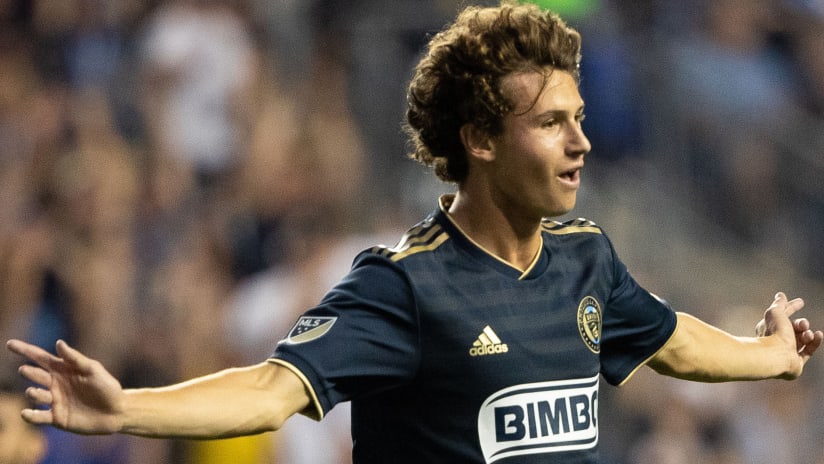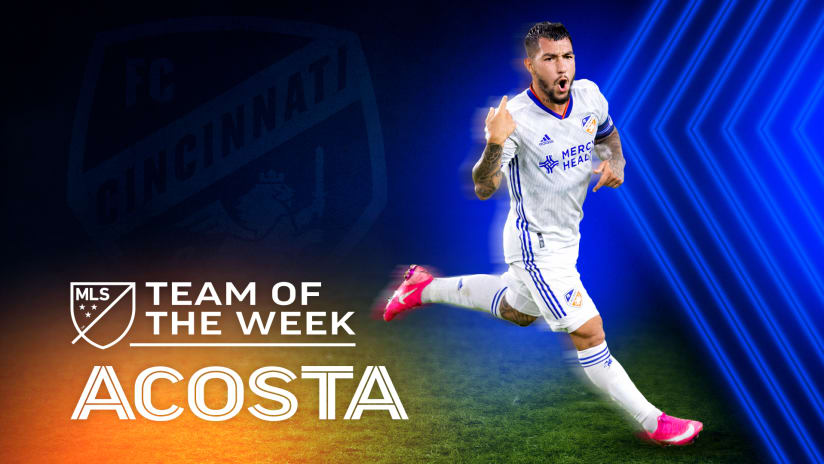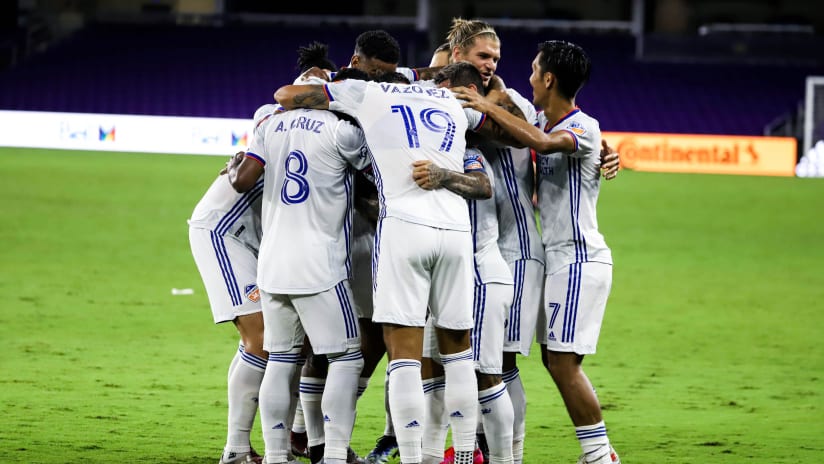NOTE: Every day this week, FC Cincinnati will take a deeper look at various academy programs across MLS that stand out for either their success in developing players for the first team – and international transfers – or for their methodology in training and/or integration into the first team. Last week, we started with an overview. The first team featured was Sporting Kansas City, while today's piece focuses on the Philadelphia Union. Stories on Real Salt Lake and FC Dallas will run Wednesday and Thursday, respectively.
Seven years later, the flipcard still sits in Tommy Wilson’s office, with the beliefs he wrote then still the values he holds now.
“They’re just basic things, really, but I’ve kept it,” Wilson said while looking at the paper.
- The standard you set are the standards you get.
- Keep modesty and humility. Everyone works hard, but no one’s better than anyone else.
- A player should be comfortable with the ball, not embarrassed by it.
- Look into the future and try to predict what the modern game will be, because that’s what our kids will play, not the game of today.
At the time, Wilson was working at Rangers FC as their academy’s technical director and reserve team coach. Before that was a playing career and a stint coaching Scottish youth national teams.
In his new job – Philadelphia Union Academy Director – he wanted to teach his old values to a young club.
These beliefs have evolved to be the core tenants of the Union – a team that’s gone from wanting a good academy to a beacon of youth development in MLS.
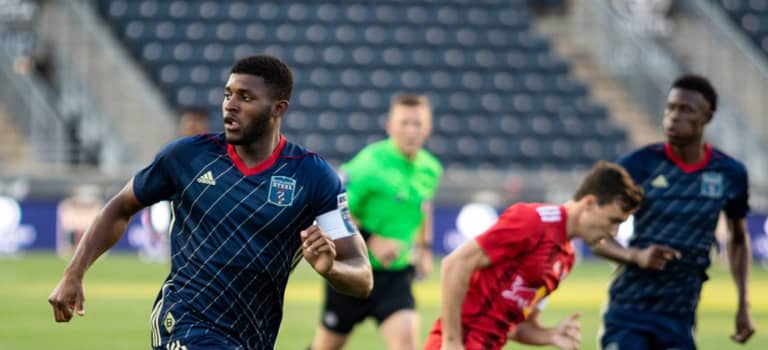
Mark McKenzie. Photo via @PhilaUnionII, Twitter.
Growing up
Currently, the Union have seven youth teams, plus Philadelphia Union II in the USL Championship (formerly Bethlehem Steel FC). There were three youth teams total when Wilson arrived.
“The pyramid wasn’t complete,” Wilson said about his early days. “It was a glass ceiling to the professional game because there were just stepping stones in place to complete the pathway between the Under-18s as it was then and the first team.”
Now, the Union roster includes seven Homegrown Players who’ve graduated from the academy.
Brenden Aaronson is the headliner: a 19-year-old midfielder who’s already been called up to the U.S. Men’s National Team and was recently named the seventh-best player in MLS’ “22 under 22.” Mark McKenzie, a young, promising center back who’s only 20 years old, was ranked No. 16.
“We are genuinely a club that believes in development,” Wilson said. “I could do all the things that I’m doing and work really hard with the staff we have and the investment we have, but if the manager and sporting director aren’t brave enough to allow the players to be showcased in the first team, then that blockage (devalues our academy.) We have a synergy between all areas of the club. The work we’re putting in is bearing fruit.”
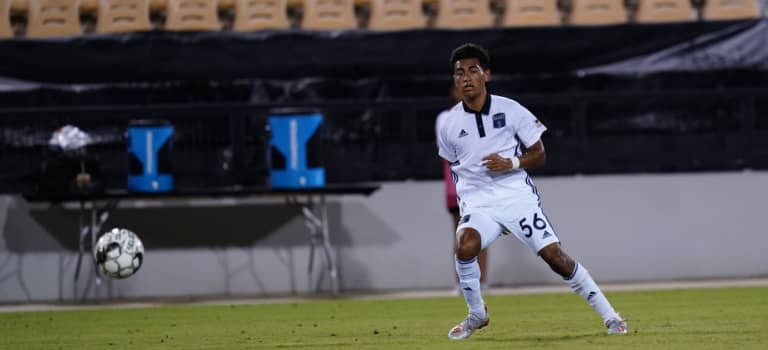
Luis Flores. Photo via @PhilaUnionII, Twitter.
How FC Cincinnati played a part in showcasing that
Two days before the 2019 MLS SuperDraft, the Orange and Blue started stockpiling draft picks.
After a trade with LAFC helped acquire the No. 16 pick and $175,000 in General Allocation Money, FCC took that cash and traded $150,000 GAM for every Philadelphia pick in the upcoming draft.
“This is an opportunity to build for the future,” said president and former general manager Jeff Berding. “We don’t have an academy and we don’t have Homegrown (Players). This gives us an opportunity to jumpstart that process.
“The draft involves a projection,” Berding added, “But the greater number of picks you give yourself, the greatest opportunity to get future contributors to your first team.”
Cincinnati eventually selected Logan Gdula and Tommy McCabe from picks acquired from Philly.
The Union saw the trade from a different angle, though.
Unlike Cincinnati, they had an academy and had Homegrown Players. Whereas FCC wanted to draft players who could be part of the club’s long-term plans since they didn’t yet have a youth development platform in place, the Union could benefit from their academy’s process, and willingly traded their draft picks for roster-building cash.
“It is quite simply explained,” said Ernst Tanner, their sporting director. “If you look at the quality of players from the draft, with a few exceptions … and you compare this with the players that we have in our academy on the internal side, the decision was quite easy because we had players like Brenden Aaronson who are 18 and not 21 or 22 like prospects we usually get (in the SuperDraft).
“The decision was really easy,” Tanner said. “We went with Brenden Aaronson and gave away our draft picks for allocation money. As it turned out, it was probably the best decision for us.”
The “for us” is critical.
For FC Cincinnati, adding young players filled the roster with prospects who can potentially play a role in the club’s future. It made sense, especially considering the Union picks were acquired via the money profited from the LAFC trade.
But for the Union, who have depth charts created by their first team, the USL Championship side and a proven academy, they clearly felt there was no need to acquire an outside player when they had good ones already in their organization – and more importantly – already know the club’s playing style.
“We decide exactly what we do and what we would like to get out of our academy, particularly in the way we play we would like to play,” Tanner said. “That’s what we cannot do with the college kids.”
As the FC Cincinnati Academy progress from a mere months old to years old, these are the types of decisions GM Gerard Nijkamp may make in the future. But last January, that luxury wasn’t available to FCC.
Incoming transfer business: promotion vs. external
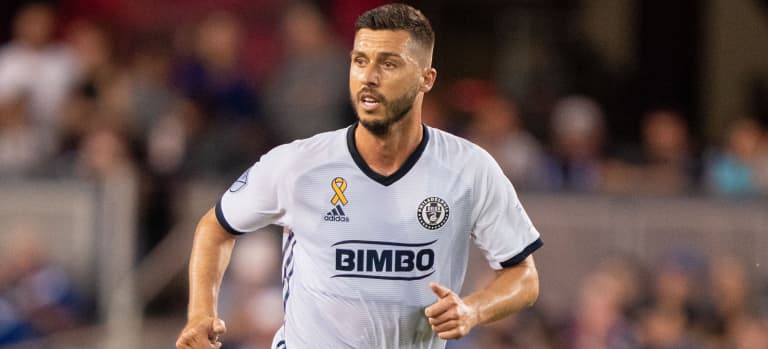
Haris Medunjanin. Photo via Kyle Terada-USA Today Sports
Another move involving the Orange and Blue helps show Philadelphia’s belief in its academy.
On Nov. 25, FC Cincinnati selected Haris Medunjanin first overall in the 2019 MLS Waivers Draft. Medunjanin, who was a free agent, played every minute for the Union in 2019. Many say he boasted a Best XI-type season last year.
Come March 1, 2020, Medunjanin could be an FCC starting midfielder, but Philadelphia decided to move on from the former Bosnia and Herzegovina midfielder.
Why they did so isn’t what matters.
Instead, the better question is how will the Union replace Medunjanin?
The Union approach departures with three basic principles:
- Can that player be replaced by someone else in the academy or on Union II? If so, then the club can sign another Homegrown Player and see if he fits their style and is successful. (Note this signing doesn’t require a transfer fee.)
- If another option in the organization isn’t readily available, do the Union acquire a player for a short-term move before promoting an academy product?
- If there’s no player coming through the pipeline in that particular position, then Philadelphia will look for a long-term option during a transfer window.
“Basically, we look inside the academy and the Union II team to see if someone there can do the job,” Tanner said. “If that is not the case, or if we lose a lot of experience like Haris, then we need to look elsewhere.”
These decisions are made by the “technical heart” of the club, which features Wilson. It’s another example of the trust and the team’s faith in playing academy graduates before exploring the open market.
“When you have a long-term approach, those are some of the conversations you can have,” Wilson said.
How players go from Pre-Academy to professional contracts
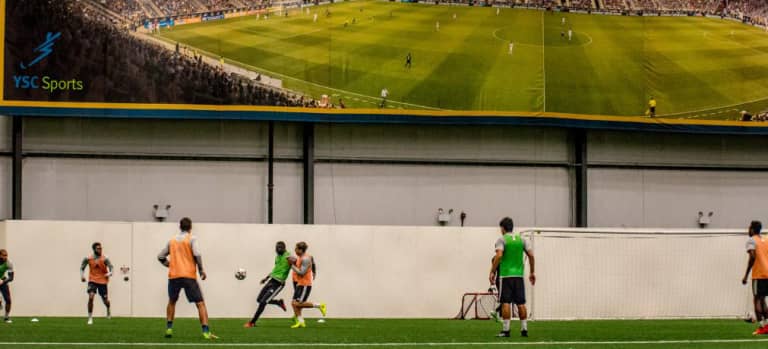
Photo from https://www.philadelphiaunion.com/.
On Dec. 1, the Union’s Under-12 team won the Generation adidas Cup.
Yes, the title shows Philadelphia could have a bright future with those players in the next 4-8 years, but it’s more likely that tournament-winning team shows the quality of the club’s Pre-Academy.
“It’s unlikely the U-12 team that just won the GA Cup will made their debut as a team for the first team, you know?” Wilson said.
The Pre-Academy setup includes approximately 200 players, but the academy director said that number will slim down in the future.
Once players enter the academy, there are two U-12 teams, followed by U-13, 14, 15, 17 and 19 teams. Forty-five percent of players who graduate will earn scholarships to the top college soccer programs, Wilson boasts.
More importantly, though, is the proven pathway for young academy players to make the first team.
“That’s tangible,” Wilson said. “That’s not a made-up story. It’s there and they can see it.”
The proven track record has also helped the Union recruit talent from outside of their territory.
When Wilson started with the club, they had three players in their residency program. Now, that number hovers between 70-80 players attending the YSC Academy for college-prep classes.
“It’s world class, and I don’t use that term loosely,” he said of the YSC Academy.
Sporting Kansas City also have a residency program, but the clubs operate their programs in different ways. Whereas the Midwest club often looks for younger players, Wilson said Philadelphia has no problem recruiting older players to join the Philadelphia setup.
“We don’t go searching for a positional need,” Wilson said. “We look for talent. So, if we’ve got two of the best center backs in the country at U-17, and another one comes under our radar, we’ll go after him as well because we can play them in different positions. You can never have enough talent.”
What comes next
The Union’s transfer business serves is a reminder that a club can improve without looking externally for players.
“The boys that make their debut in the first team and who stick are generally the ones that’ve loved the club the longest,” Wilson said. “Some of the (current Homegrown Players) predate me.”
That’s the model that FC Cincinnati are working toward.
As for the Union, expect their academy to keep improving.
Wilson said he was recently in Germany and learned an idea that’s synonymous with the world’s best clubs and their youth setups: “They say it takes 10 years and a lot of bravery to change a philosophy.”
Think about how much has changed since Wilson jotted notes into his flipcard – and think about the pre-teens who just won a national tournament. That’s what awaits the Philadelphia Union: more success, but done by using a modest approach.

